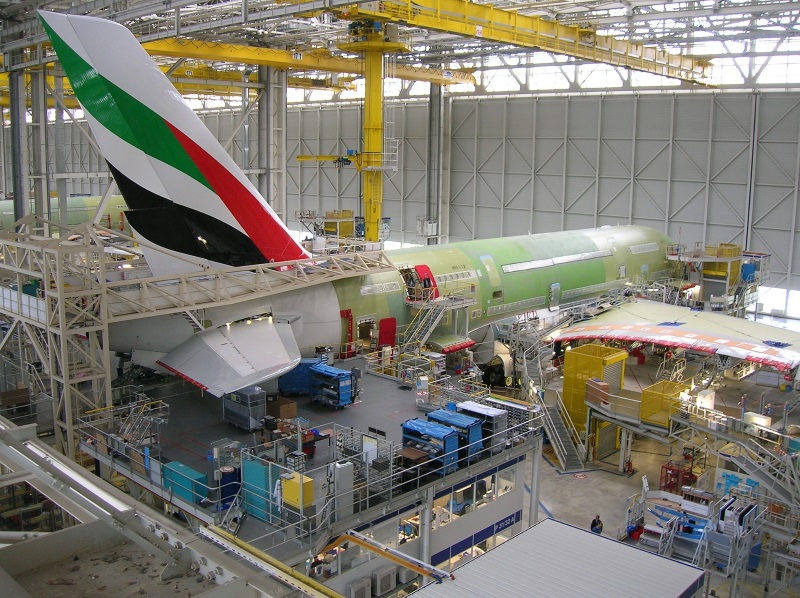Manufacturers working with composites in the aerospace industry face a series of unique and complex challenges. These include the time-sensitive nature of many composite raw materials that require constant monitoring. In addition, expensive raw material waste is generated during the production process, and this brings other industry challenges, as manufacturers want to stay competitive, save costs, and meet high quality standards.
The composites challenge
Time-sensitive raw materials
Management of time-sensitive raw materials is perhaps the most unique aspect of working with composites. The issue is that many composite raw materials must be stored in freezers and once they are out of the freezer, they have a limited shelf-life. Many aerospace composite part manufacturers currently rely on manual tracking to manage this, which is both time-consuming and subject to human error.
Cutting and kitting
The cutting and kitting process is another major source for inefficiencies. Manually creating cut plans is time consuming, and it also leads to waste of expensive raw materials as human workers struggle to compute the most optimum cutting plans possible. Creating an optimal cut plan (nest) requires the most advanced optimization algorithm, that analyses an enormous number of scenarios, while also examining which work orders could be mixed into one cut plan.
Optimal material selection
In many aerospace factories, the process of assigning composite raw materials to production lines is completely manual. Often a human worker will assign raw material for production by simply opening the door of the freezer or storage unit and grabbing the material roll nearest to the door. This is sub-optimal since workers should select material rolls in such a way as to reduce waste, but it is also perhaps inevitable in a factory where busy human workers are pushed for time. What is really required, is a software solution that can analyse the complex combination of different material properties in order to assign the best material for the job.
The quality issue – audits and recalls
Finally, aerospace composite part manufacturers have to deal with tough quality challenges. That’s because of the uncompromising nature of the aerospace industry. For this reason, composite part manufacturers must always be ready for audits at short notice and must always be ready to deal with product recalls. This is an incredibly complex challenge, and it requires process monitoring and keeping record of the entire Digital Thread, consisting of the history of each material used and every procedure applied throughout the entire manufacturing process.
The solution and benefits
Bringing the IIoT and AI to aerospace composite part manufacturers
In order to help address these challenges, Siemens is integrating Plataine’s technology into their Manufacturing Operations Management (MOM) solution Opcenter, by using Plataine’s deep domain knowledge in the field of aerospace composites and IIoT in order to deliver an end-to-end solution for Siemens’ aerospace composites customers. AI-based algorithms analyse the data and provide smart insights and predictions to the factory floor operator to make optimized, data driven decisions even across factories and GEOs.
What is the Siemens MOM Opcenter solution, and what does Plataine add?
The MOM solution consolidates all production processes to deliver another level of visibility on top of an MES, giving an end-to-end view. The result is improved quality, the ability to perform advanced planning, and better direction of product design efforts; as well as improved efficiency, flexibility, and time-to-market. Plataine brings an important new range of capabilities to MOM.
Real-time monitoring of raw materials
Combining AI-based IIoT technology with RFID tags allows all composite raw material rolls to be tracked in real-time as soon as they enter the factory – including monitoring of material shelf-life. AI-based algorithms proactively apply the intelligence to analyze the historical manufacturing data and offer predictions related to late work orders, material expiration and suggest actions to prevent these problems. If there is an unexpected production delay causing the ETL (expiration time left) to run low, Digital Assistants alert employees to the best course of action – which is likely to be either to use another raw material with a longer ETL, or to get finished parts that have been delayed into the autoclave.
Optimized cutting and kitting processes
With the Plataine-Siemens solution, ready-to-cut production plans are automatically created. The fully CAD-integrated AI software achieves optimal material utilization by taking all variables – such as dynamic customer orders – into account. To save material, the AI-based software fits as many plies into each cut plan as possible, while advanced optimization algorithms ensure optimal plans even with mixed work orders, which results in higher material yield. At the same time, the software knows that, if a cut plan is too complicated, shop-floor staff will not be able to keep track of the picking and sorting process. Additionally, if the cutting, kitting, and sorting process has been automated, it understands the constraints of this too.
Intelligent raw material assignment
Plataine’s Digital Assistants automatically assign composite raw materials to production lines – leading to significantly reduced waste. RFID and sensors mean the software knows where all raw material is stored, how long each roll is, and its shelf-life. This delivers huge possibilities for optimization. For example, if time-sensitive raw material is required for a rapid production process, the AI software will choose a material roll with a shorter ETL. The software also ensures that short rolls and remnants are used up – which would often be overlooked by human workers as inconveniences.
Meeting the quality challenge
The Digital Thread keeps an automated record of every element of production, from raw material to end product – meaning that if a batch of composite raw material is later found to have been defective, production records can show exactly which kits had that material incorporated. Those kits can then be located and taken out of production. Identifying problems earlier in the production process can dramatically lower the costs attributed to defects. Meanwhile, automated record keeping also means that customers are always audit ready.
Improved asset management
On top of all this, Plataine’s real-time monitoring of all factory-floor assets, from machines to tools to jigs – allows elimination of production bottlenecks. Production plans can be instantly recreated in response to changed circumstances and, with real-time tracking, lost tools are a thing of the past.
Summary
These are just some of the ways that Plataine’s advanced digital manufacturing solution can help during the production process. The Plataine partnership represents a major step forward for Siemens’ aerospace customers, delivering new levels of material savings and manufacturing efficiencies that are tailored specifically to the needs of factories working with composites.










